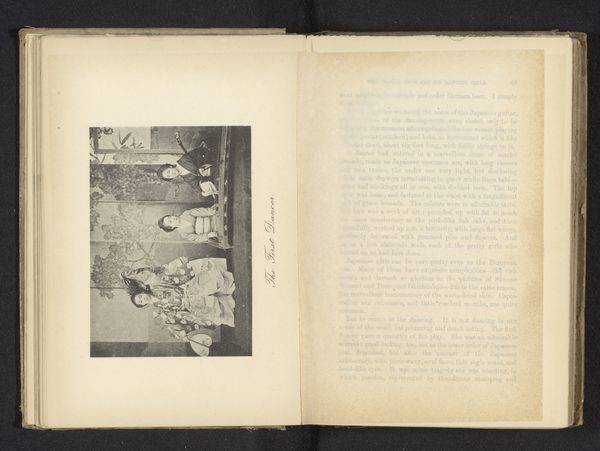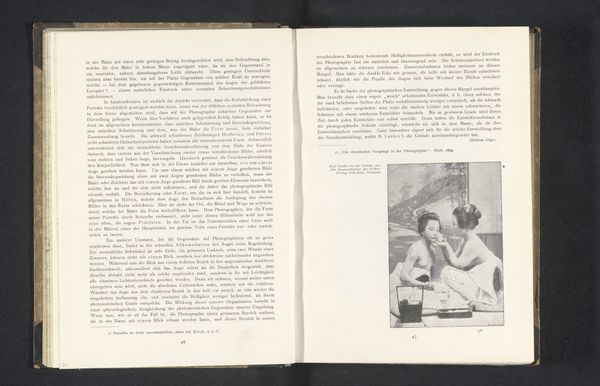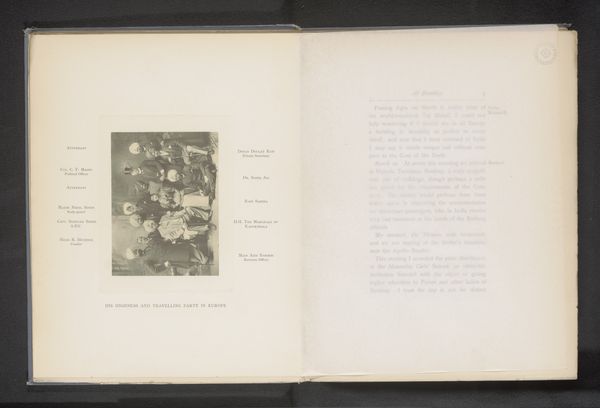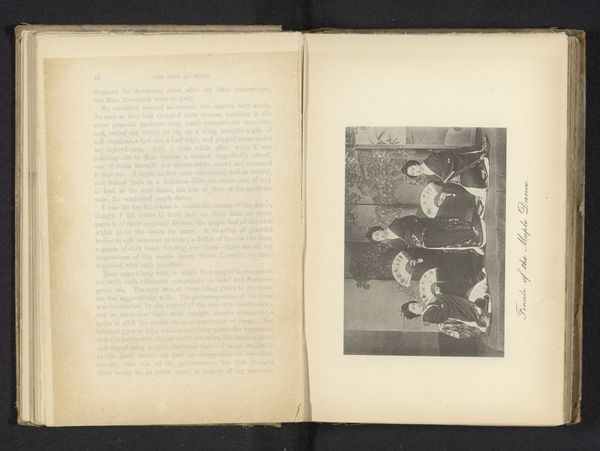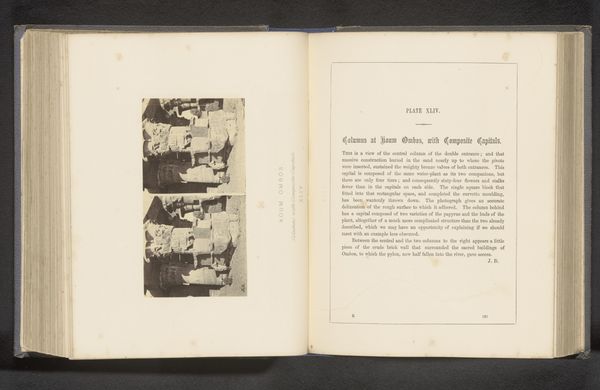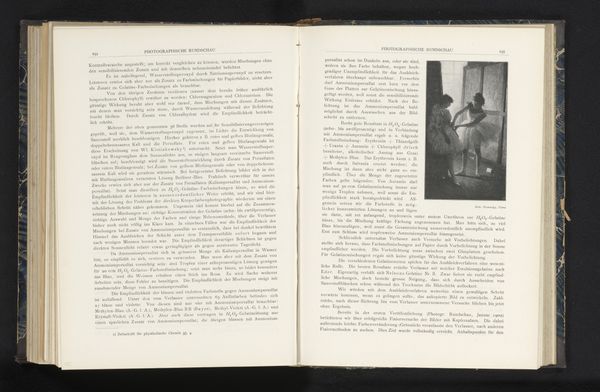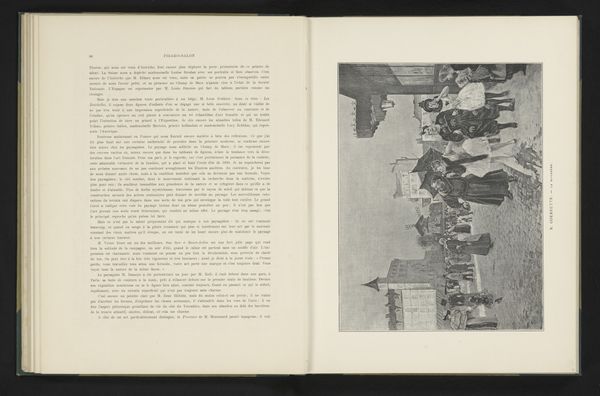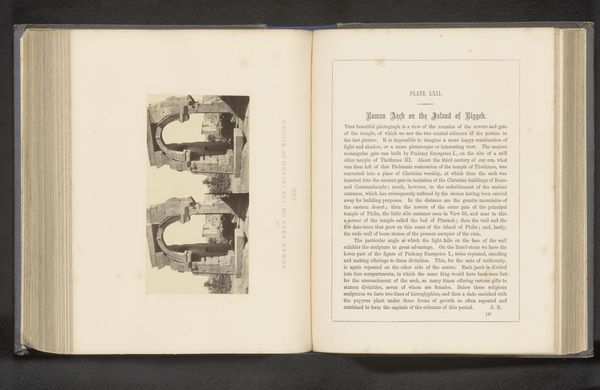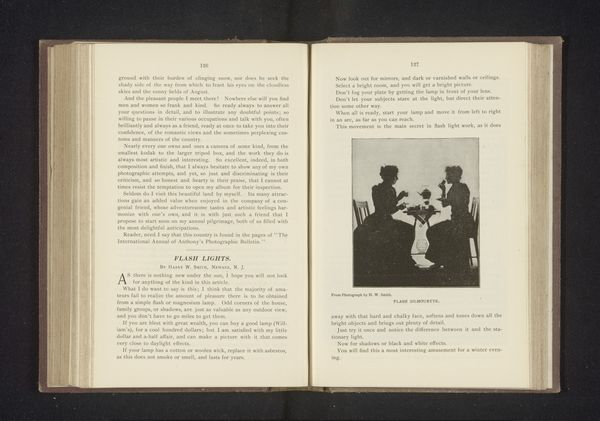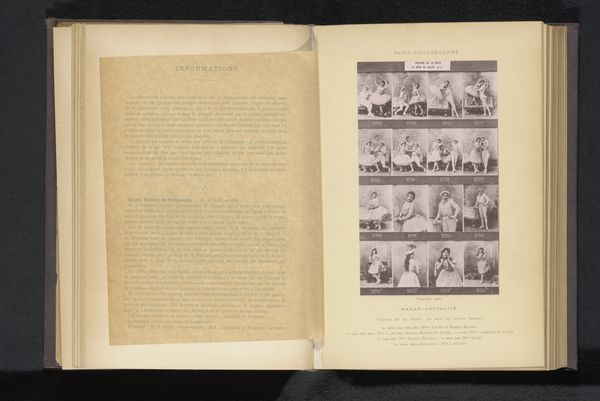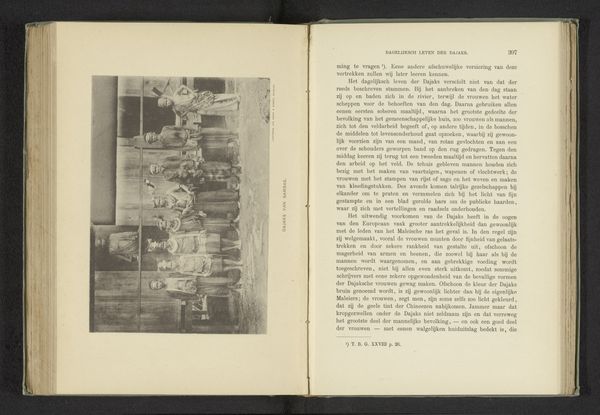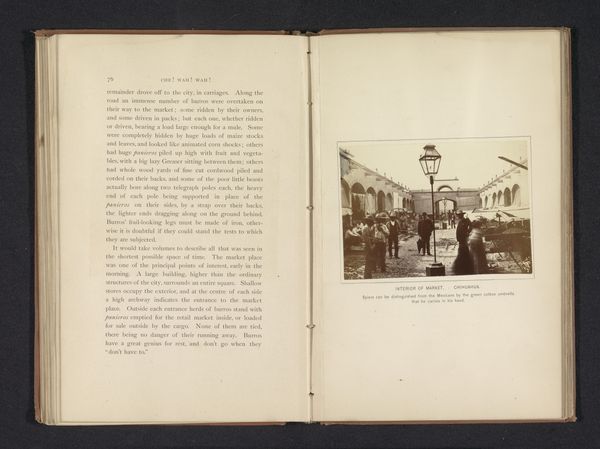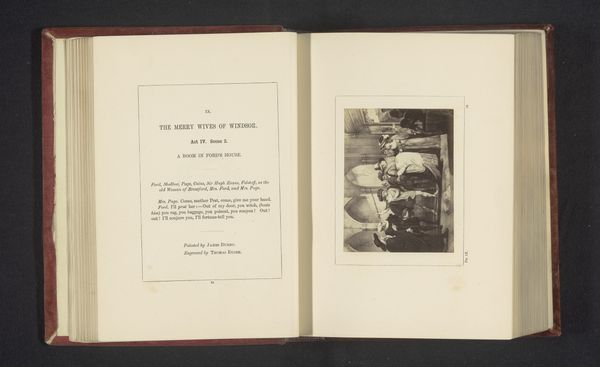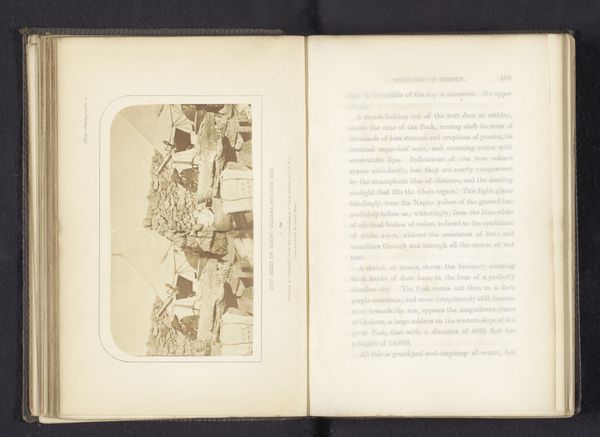
photography
#
portrait
#
photography
#
genre-painting
Dimensions: height 135 mm, width 109 mm
Copyright: Rijks Museum: Open Domain
Curator: Let's turn our attention to this striking photographic print, dating from before 1899, entitled "Portret van bisschop Van Reeth en vier priesters in opleiding" by E. Castelein. Editor: Well, isn’t that just drenched in serious atmosphere? You’ve got Bishop Van Reeth looking positively patriarchal, surrounded by these younger clerics, and I get an immediate sense of hierarchy and the weight of tradition from the composition. Curator: Exactly, and observe the material itself: a photographic print, not some grand oil painting. This speaks to photography's democratizing potential at the time, making portraiture accessible beyond the elite. Notice also how it has been reproduced as an illustration in a book? The original has become image or sign. Editor: Yes, the book reproduction adds another layer of detachment, doesn’t it? And the clothing is fascinating – it highlights how dress functioned in visual communication. It reinforces not only individual identities but their status in a rigid structure. Curator: I’m with you. Clothing as a symbol of both piety and profession. The very act of commissioning and then reproducing a group portrait such as this served the Church's needs for social promotion and image management, by publicly cementing social bonds, codes of behavior, and status. Editor: The image is quite formal, there is little evidence of the material trappings, like props, and background that was normally incorporated for storytelling in similar images, instead all visual focus is drawn to the figures of the priests and Bishop, perhaps reflecting a spiritual emphasis and not just an aspirational advertisement. Curator: It suggests a desire for authority but presented humbly—an interesting contradiction inherent within religious representation, then, and now. Editor: Looking at their expressions... most seem resigned, even shy or perhaps a touch hopeful – there's a real human quality there that contrasts with the formal nature of the portrait. They appear self-conscious, which speaks of their understanding that this is also propaganda in some form. Curator: And I would wager the act of mass producing this image and the use to which it has been put are examples of propaganda that has reached beyond the specific community of these students, and reached through history for us to consider what we're considering now. Editor: That's given me some interesting perspectives on the image! Curator: It seems like we both gained an improved understanding of how material constraints and historical uses shape both our view and its original production, in turn.
Comments
No comments
Be the first to comment and join the conversation on the ultimate creative platform.
